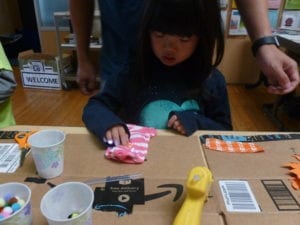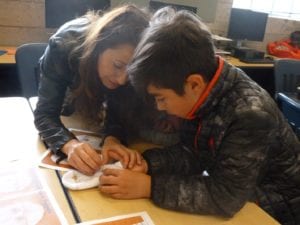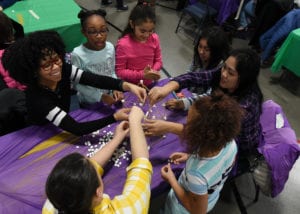3 Tips to Bringing STEM Home
Family STEM night. Check. While it’s great to host a celebration so that parents can see what their children have accomplished in an afterschool program or summer camp, there is so much more to do. It’s essential to make family engagement more than a one-time experience. Here are three promising practices from groups who listened and learned from families about how to make their STEM programs relevant, accessible, and importantly, ongoing past family night.
1. Make STEM activities easy and materials accessible so that parents can repeat them at home.

Bay Area STEM Ecosystem
Harold Asturias (Director of the Center for Mathematics Excellence and Equity at Lawrence Hall of Science), was surprised to learn that while families enjoyed doing activities at Family Math at the Hall they didn’t feel as comfortable doing them at home. That was a lesson that encouraged Harold to rethink activities from the perspective of parents. As you plan STEM activities, stop and consider if they are family-friendly. How can you find out? Ask families if they feel confident trying them at home.
2. Connect STEM with what families are already engaged in.

Bay Area STEM Ecosystem
The Tinkering Studio team at the Exploratorium thoughtfully selects projects that honor the cultures and experiences of families. So, instead of introducing Making with 3D catapults, robots, and rocket launchers, they support activities like home electronics repair and intergenerational use of sewing machines. Projects like these are responsive to the experiences and needs of the culturally diverse families that they serve. They matter to the youth and their families and serve community needs and interests.
3. Give families resources to take away.

In Playtime is Science, Maryann Stimmer offered STEM activities-in-a-bag with instructions along with additional ideas to follow up with. Maryann made sure that written materials were translated for families. She followed up and asked kids if they played with the activities at home to get feedback on the success of her efforts. She also encouraged families to participate in STEM-related events in the community like the New York Hall of Science’s Maker Faire. This kind of sharing of events in the community supports the educational and social capital of families.

